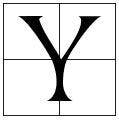The pyramid has been buried at the peak of Mount Padang in West Java for thousands of years (Indonesia).
The oldest pyramid in the world is found in Java, Indonesia

 You have probably heard about the magnificent pyramids of Giza, or the beautiful Mayan pyramids in Mexico and Guatemala. Those megalithic structures were built respectively 4500 and 1500 years ago according to archeological consensus. It would surprise many then that the oldest discovered pyramid in the world might have been constructed over 20,000 years ago. Gunung Padang is located on the Indonesian island of Java and has been discovered fairly recently by a team of independent international researchers led by Indonesian geologist Dr. Danny Hilman Natawidjaja.
You have probably heard about the magnificent pyramids of Giza, or the beautiful Mayan pyramids in Mexico and Guatemala. Those megalithic structures were built respectively 4500 and 1500 years ago according to archeological consensus. It would surprise many then that the oldest discovered pyramid in the world might have been constructed over 20,000 years ago. Gunung Padang is located on the Indonesian island of Java and has been discovered fairly recently by a team of independent international researchers led by Indonesian geologist Dr. Danny Hilman Natawidjaja.


How old is Gunung Padang?
Using various scientific techniques such as ground-penetrating radar, researchers identified three different layers covering an initial fourth layer. These four layers have all been dated to a specific time in history. The surface layer one might be as old as 3,500 years, layer two around 8,000 years old, and the age of layer three is 10,000 and possibly much older. Since it is such a long time ago, the maximum age of the site is hard to determine accurately. According to the current dating, however, it can be confidently stated that the first constructions of the site began at least 10,000 years ago. The discovery is absolutely groundbreaking. If the researchers are indeed correct, Gunung Padang would be the most ancient man-made structure on Earth.
The age of the various layers has been accurately dated using a technique called carbon dating. Carbon dating is a rather simple technique but a little hard to explain. In simple words; organic material absorbs carbon, including a certain amount of natural, radioactive carbon-14. Over the years the carbon decays and by examining the carbon particles in modern times, researchers can determine for how long the carbon has been decaying and therefore how long ago the site in question has been constructed.


Rather than a pyramid, like the ones in Egypt, Gunung Padang is a terrace-like structure built on top of an existing volcanic hill. The terraced structure is most likely comparable to the step pyramids of the Mayas. The megalithic structure, being the largest one in Southeast Asia, was most probably used as a place of worship. The exact reason for the construction is hard to determine however and might become more clear as more research is conducted.


The different layers of Gunung Padang
The various layers dating to different periods in time indicate different eras of construction at Gunung Padang. 10,000 (possibly 20,000 or older) years ago constructions at the site began for the first time. 9,000 years ago the structure was wrapped in andesite columns. 7,000 years ago there was most likely a renovation that added an additional layer of stone. Finally, around 3,000 years ago the structure was covered and hidden in a layer of soil for unknown reasons, only to be rediscovered 3,000 years later again by researchers of our time.
Most research as of now has been done on layers one and two. The site gets real mysterious however when going beyond these first two layers. Buried beneath the first two layers, at a depth between 15 and 25 meters from the top of the structure, Hilman and his team discovered something truly special. Ground-penetrating radar (GPR) techniques have found and confirmed the presence of various chambers, walls, staircases, and gates buried deep between the ruins on the surface. As of now, Hilman and his team can only speculate on the reason and use of these mysterious findings deep down at the third and fourth layers of the structure. More funding and excavations are needed before more details can be released.


Criticism on the studies conducted
Ever since the initial report, Hilman and his team had to endure fierce criticism from the global archeologic community. Critics and skeptics have claimed that the pyramid is not man-made but rather created by natural volcanic activity. Another critic claims the dating must be incorrect because there was no culture capable of constructing such a site in that area at the time the researchers propose. Hilman and his team have also been accused of using incorrect excavation methods. In other words, the archeological community is very hesitant to accept Hilman’s claims.
If Hilman is correct, we might have to completely reconsider the history of humankind; a large part of what has been claimed by historians and archeologists would be incorrect. It would mean that human beings were capable of constructing advanced structures thousands of years earlier than currently believed. As Hilman states: “People think the prehistoric age was primitive, but this monument proves that wrong.’’


The significance of the discovery
Since 2018 excavations at Gunung Padang have been halted due to unknown reasons. One of the reasons might be the very limited resources made available for the excavations in recent years. Recently, Hilman has indicated he is working on a peer-reviewed paper backing up his paradigm-shifting claims about the site.
Although Gunung Padang is shrouded in mystery and uncertainty, one thing is clear. Gunung Padang might be one of the most, if not the most important archeological site on Earth. Further study and excavation have the potential to completely change the way we understand our own history. For now, we have to be patient, and time will tell just how significant Gunung Padang is in explaining our ancient past.


References
Peter Dockrill, “A Scientist Claims The World’s Oldest Pyramid Is Hidden in an Indonesian Mountain” 2018
Arya Dipa “Archaeologists slam excavation of Gunung Padang site” The Jakarta Post

























You need to be a part of a contest for one of the greatest sites on the net.
I will recommend this site!